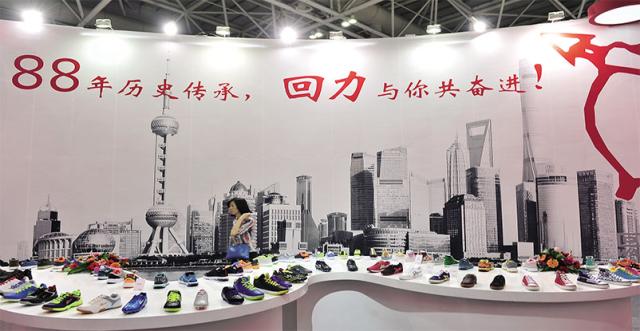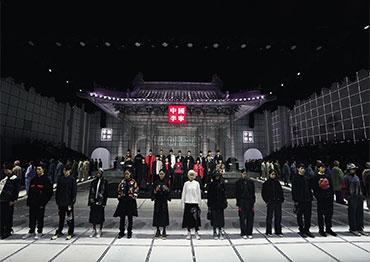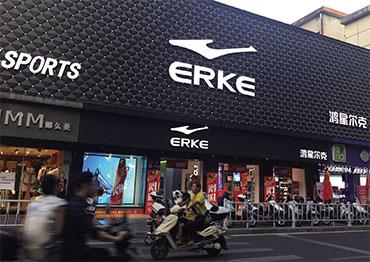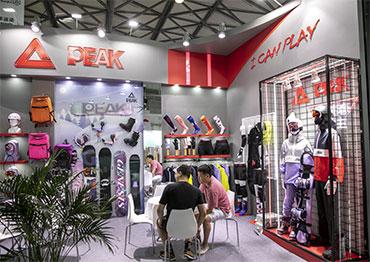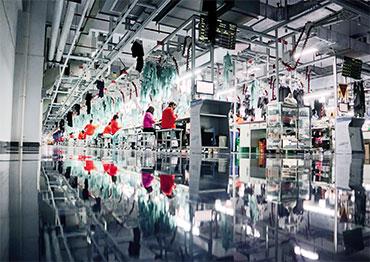In 2012, jogging became all the rage as China’s annual per capita GDP exceeded US$6,000, according to Analysys, an industry information provider. In 2015, when that number reached US$8,000, more people took up cycling and rollerblading.
Between 2014 and 2018, sporting goods manufacturing value added climbed steadily year-on-year from 254.7 billion yuan (US$40b) to 339.9 billion yuan (US$53b). As the industry grew, so did the competition as more international and local brands joined the fray.
Ding Shizhong believed that Anta’s only chance to overtake Nike was to stop imitating its strategies and find a different business model. It adopted a multi-brand strategy and invested heavily in R&D. Chinese shorttrack speed skater Wu Dajing won his first Olympic gold medal at the Pyeongchang 2018 Winter Games wearing an Anta suit. It was the first of its kind to be developed by a Chinese company, which claimed it could reduce air drag by 10 percent. Previously, China’s national team relied on imported speed skating suits.
In 2009, Anta purchased Fila’s operating rights for the Chinese mainland, Hong Kong and Macao from Chinese footwear producerretailer Belle International for HK$650 million (US$83.3m) – two-thirds of Anta’s net profits for 2008. After the acquisition, Anta focused Fila on fashion sportswear, targeting middle-income consumers between 25 and 35 years old.
Armed with experience operating an international brand, Anta then acquired Sprandi, a UK-based sportswear brand, Descente from Japan and Kolon Sport from South Korea. In 2019, together with other investment institutions, it acquired Finnish brand Amer Sports for 4.6 billion euros (US$5.2b), the biggest cross-border purchase in the industry. Thirteen brands under Anta, such as outdoor sports equipment brand Salomon and outdoor apparel brand Arc’teryx, rank among the top in their respective niches.
China’s ice and snow industry reached around 423.5 billion yuan (US$66.9b) in 2019, according to a report on China’s ice and snow economy released by the State Council in 2020. Driven by the 2022 Winter Olympics and other incentives, experts forecast the industry’s scale to surpass 800 billion yuan (US$126.3b) over the next five years.
In the first half of 2021, Anta surpassed Adidas in China with a revenue of 22.8 billion yuan (US$3.6b). By mid-2021, Anta was valued at a record high of HK$512.8 billion (US$65.7b) to become the secondlargest sports brand globally behind Nike.
In 2016, one year after seeing gains for the first time since 2011, Li-Ning purchased operating rights for US dancewear brand Danskin in the Chinese mainland and Macao regions for 100 million yuan (US$15.7m).
China’s legacy sports brands also got a second wind. After suspending production for 11 years, Meihua reemerged in 2015. In 2016, Feiyue, a 1950s brand from Shanghai that for decades produced the low-tech trainers that generations of grade school students wore for gym class, also gained traction. In 2016, Feiyue collaborated with brands like Pepsi-Cola, Marvel Comics and ZTE, a telecom manufacturer, to reach younger consumers. Fueled by nostalgia, Warrior, a Converse-like brand popular in the 1970s and 80s, has found a cult following.
New brands are also gaining speed. In 2019, niche brand Particle Fever from Shanghai became the sponsor of China’s national canoeing, kayak, rowing and dragon boat teams. The brand rose to fame overnight when the Chinese women’s rowing team won gold in the quadruple sculls at the Tokyo 20202 Games which took place in 2021.
Zhao Xianglin, vice president of sporting goods manufacturer Double Fish, said a global presence gives international brands a competitive edge in China. Brands like Nike sponsor the world’s most influential athletes, which attracts Chinese consumers. “If they [domestic brands] want to beat out international brands in the local market, they need to increase their share of the global market,” Zhao said.
Leading Chinese brands have global ambitions. In 2018, Anta launched its globalization strategy. Its acquisition of foreign brands like Amer Sports, which already have solid customer bases overseas, are expected to provide big boosts. After eight years of suspended efforts to expand overseas, Li-Ning opened its first official store on AliExpress, Alibaba’s cross-border e-commerce platform, in 2016. Other domestic brands including Xtep, Peak and Erke are making plays for global markets.
Besides acquiring foreign brands, Chinese makers are combining Chinese and international styles. In February 2018, Li-Ning became the first Chinese sports brand represented at New York Fashion Week, garnering attention for its “China chic” designs. The same year, Li-Ning surpassed 10 billion yuan (US$1.6b) in revenue for the first time. At the end of 2020, Peak shoes co-branded with Le Louvre, while Anta shoes by American footwear designer Salehe Bembury hit the market.
A new race is on between Chinese and international sportswear brands, and neither are showing any signs of letting up.
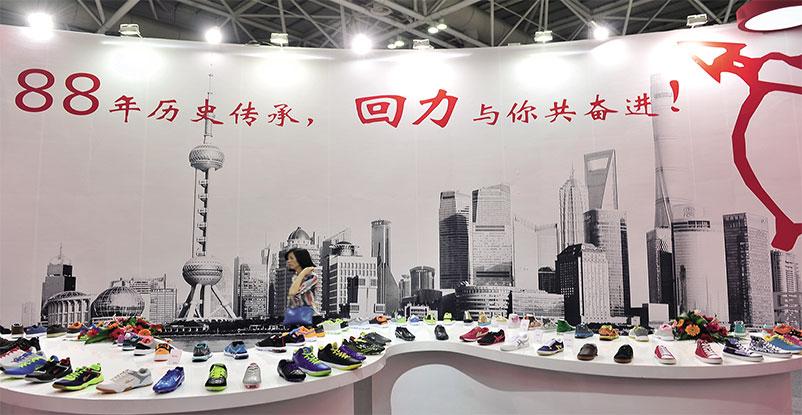
 Old Version
Old Version
